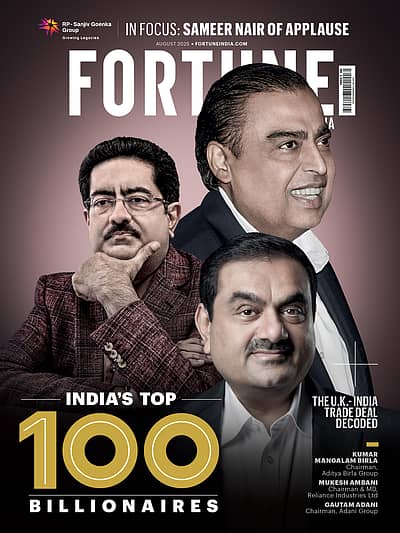Hollywood, Bollywood, YouTube-wood? Talking to Zerodha’s Nikhil Kamath, YouTube CEO Neal Mohan charts a new path for cinema
ADVERTISEMENT

Content is king, this statement has become the new cliché, with everyone touting it in their everyday conversations. But what about the role of platforms that host content? In a wide-ranging conversation with Neal Mohan, the CEO of YouTube, Nikhil Kamath , the co-founder of Zerodha, explored how content consumption has evolved, and what the future looks like next.
Kamath, reflecting on his own media journey growing up in India, recalled, how he grew up in the city of Bangalore (now known as Bengaluru), and his relationship with content were Hindi TV serials and, later on, broadcast TV.
“I have grown up in India, largely in Bangalore… my relationship with content went from watching Hindi TV serials growing up on traditional broadcast TV, to cricket, and then maybe getting my first personal device… when I was 16 or 17 years old,” Kamath observed.
August 2025
As India continues to be the world’s fastest-growing major economy, Fortune India presents its special issue on the nation’s Top 100 Billionaires. Curated in partnership with Waterfield Advisors, this year’s list reflects a slight decline in the number of dollar billionaires—from 185 to 182—even as the entry threshold for the Top 100 rose to ₹24,283 crore, up from ₹22,739 crore last year. From stalwarts like Mukesh Ambani, Gautam Adani, and the Mistry family, who continue to lead the list, to major gainers such as Sunil Mittal and Kumar Mangalam Birla, the issue goes beyond the numbers to explore the resilience, ambition, and strategic foresight that define India’s wealth creators. Read their compelling stories in the latest issue of Fortune India. On stands now.
Now 38, Kamath wondered aloud what content would look like for him, say 10 years later, at 48: “What content will [I] be consuming? On what medium?”
Mohan, who leads one of the world’s most influential content platforms, responded by noting that we are still in “the early innings” of the digital content revolution.
“The growth of content in general, but YouTube content specifically, is going to only continue to grow on screens like the living room,” he said, pointing to the ongoing shift in how users access long-form content.
The Rise of Digital Content Platforms
But perhaps the most radical change, according to Mohan, is not just in format or distribution, but instead in who is creating the said content.
“Creators are the startups of Hollywood,” he said. “And I mean Hollywood, I mean Bollywood, I mean… pick your metaphor there. Just like startups keep an industry vibrant… creators do the same thing when it comes to the production of content.”
Mohan, who is the first Indian-origin executive to head the Google-owned global video platform, painted a vivid portrait of this transformation underway.
“When I go visit Burbank in California, right down the street from the largest studio in the world—Disney—there are all of these startup studios led by creators like Rhett and Link, Alan Chicken Chow… 10,000-square-foot studios where they’re producing amazing content. It’s done differently, in a very YouTube style, with their personalities. But they’re doing roughly what big studios were doing before, just at a different scale.”
Nikhil Kamath and Neal Mohan Discuss the Future of Bollywood on YouTube
Mohan remarks that nowhere is this seen better than in India, a land known for stories and storytellers. Kamath, taking a cue from this context, wondered about the rise of digital creators and how it is now beginning to challenge the conventions of Bollywood. Kamath shared an anecdote about a filmmaker friend who seriously considered bypassing the theatrical release altogether and launching a film directly on YouTube, thereby charging a smaller fee to viewers. But there was only one hesitation: content duplication and piracy.
Mohan responded candidly. “We have, for a long time, invested very heavily in DRM tools that try to prevent that… there are two aspects to piracy: one is the actual act of creating that copy… and the other is the distribution piece,” he said. He admitted there are limits to what tech can do when it comes to screen recording, but added, “Because lots of content is ultimately distributed on YouTube, we have that choke point… it’s never perfect, but we have a pretty good handle.”
YouTube, he suggested, is already emerging as a serious platform for long-form cinematic content, including films that might otherwise have gone the Bollywood route.
“This is a relatively new phenomenon, which for young people is pretty mainstream, but I think for the general population, it’s not quite there yet,” Mohan said, predicting that in the next 10 years, this model will become the norm. In other words, Bollywood filmmakers may increasingly find themselves choosing YouTube not just as a marketing vehicle, but as a primary platform for release.
Both Kamath and Mohan’s points have real-world implications. For instance, Aamir Khan, known to be one of the boldest actors and filmmakers of India, opted to go for a pay-per-view model on YouTube for his upcoming film, Sitaare Zameen Par, instead of sending it to Netflix or Amazon Prime post its theatrical run.
Mohan, in fact addressed the broader competitive landscape, particularly in response to Kamath’s question about whether YouTube would evolve to be more like Netflix, or vice versa.
“Our approach is going to be the approach that you've seen on YouTube,” Mohan said firmly. “It’s our creators that determine that sort of creative journey… there are 100 million creators in India uploading videos on YouTube. We have 15,000 creators in India with over a million subscribers.”
For a new generation of storytellers and audiences, that shift, from studio-driven cinema to creator-driven ecosystems, isn’t just the future. It’s already here.
Fortune India is now on WhatsApp! Get the latest updates from the world of business and economy delivered straight to your phone. Subscribe now.
